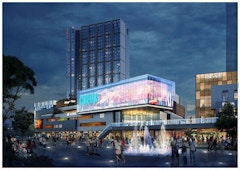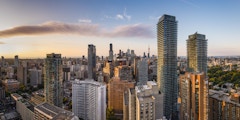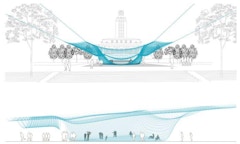
Collaborative Methodology for Fastracking Challenging Facade Concepts
The goal is to explore the role and methodology employed between the architect and engineer as they look to resolve the opposing demands of design

The goal is to explore the role and methodology employed between the architect and engineer as they look to resolve the opposing demands of design

This paper proposes system concepts and fabrication methods for the use of ultra-thin glass in facades. It documents the team's research on

Traditional architecture can be a valuable source of inspiration for designers. Sustainable design concepts in traditional architecture have been

To paraphrase Robert le Ricolias, the art of the structure is where to put the folds. Using that inspiration, fundamental concepts from origami,



Tokyo’s prestigious Ginza District, is home to innovative architectural design. One of the most recent examples is Ginza Six (GSIX), the largest

More details will be announced soon. Make sure you're signed up to receive event updates.

Designing a multi-functional building envelope as an architectural façade, environmental interface and solar collector is a multi-objective


Big data is having a noticeable impact on enclosure engineering design. With continuing advancements that liberate the geometrical form and the

It may be difficult for modern man to believe that what is known as handicraft was once the advanced manufacturing of the day. These techniques were

The NEXT Partners, together with DBZ DEUTSCHE BAUZEITSCHRIFT as media partner, cordially invite you to the 2nd International NEXT Façade Summit on March 25, 2021 as a livestream event.

Facade design is a key component of architectural expression, and increasingly a key design consideration due to growing importance of factors like:

High performance can be defined as “a building that integrates and optimizes all major high-performance building attributes, including energy

Building envelopes are not only an immediately visible part of the building, they have also become a major factor both for cost and performance of

The performative and visual aspects of curved forming/bending thin “formable” planar materials is explored. Early tests for deflection indicate that

Facades play an important role in the control of energy flow and energy consumption in buildings as they represent the interface between the outdoor

Airflow within the cavity of double-skin facades is a key component of adaptive building envelopes which change thermophysical properties to meet
Coauthors: Mary Ben Bonham, Department of Architecture + Interior Design, Miami University, Oxford, OH, USA [corresponding] [presenting at the